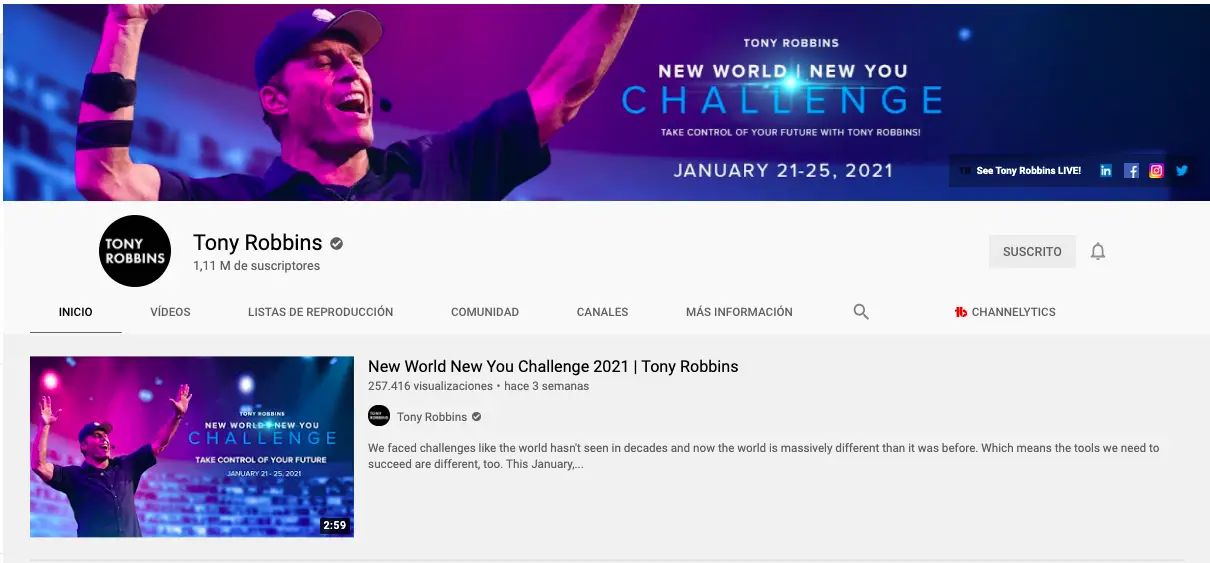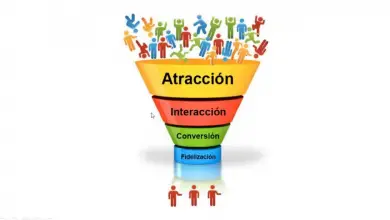Social Media Marketing: A Beginner's Guide

Today I bring you a guide on social media marketing in which we will see: characteristics, types, strategies and how to benefit from them.
Why is social media marketing so important? ...
Why should you spend time setting up social media accounts for your business? ...
How do you really build a social media marketing strategy that works for your specific type of business? ...
Today we'll answer these and other questions!
Let's start!
What is social media marketing?
Social media marketing is the act of creating content for promote your business and your products on various social media platforms like Facebook, Instagram, Twitter, etc.
Your exclusive content should be tailored to the specific platform it's shared on to help drive conversions and increase brand awareness.
Social media marketing is one of the most popular methods of digital marketingbecause we all know that in social media there is an ocean of people who can become your potential customers.
What is social media marketing?
Social media marketing is the use of social media platforms to connect with your audience in order to grow your brand, get more visits to your website and increase your sales ...
The main social media platforms (at the moment) are Facebook, Instagram, Twitter, LinkedIn, Pinterest, YouTube et Snapchat. Each of these social media marketing platforms works differently, it will depend on the type of content you have (and other things) to choose which ones serve you best to promote your business.
While social media marketing as a whole is incredibly valuable and beneficial to growing your business (as you'll see in the next section), your strategy will differ depending on the social media your audience spends their time on ...

In this article, you will find general tips for your social media marketing strategy, regardless of which social network you decide to use.
What types of marketing are there in social networks?
Here is a list of some types of social networks and what they are used for:
- Social media: connect with people.
- Media sharing platforms - Share photos, videos, etc.
- Discussion forums: share news and ideas.
- Networks notice from consumers - Find and evaluate companies.
- Blog and post communities - Publish content online.
- Networks based on interests - Share your interests and hobbies.
- Commercial social networks: buy online.
- Sharing economy networks: exchange goods and services.
- Anonymous social networks: Communicate anonymously.
Knowing about these types of social media marketing and understanding why people are using them can open up new ideas and new channels to engage with your audience more effectively.
Benefits of social media marketing
There are various reasons why your business should use social media marketing.

Let's take a look at a list of the four most beneficial reasons to consider for social media marketing.
Increase your brand awareness
Did you know: in 2018, there were over 3,2 billion people on social media around the world? ...
For this reason, you can see why making sure your business shares content related to your products, as well as details about your business through a platform or two, has the potential to help you improve your brand awareness. .

Tony Robbins is a mentor who uses the power of social media marketing very well. It is present on almost all networks. His YouTube channel has over a million subscribers and continues to grow.
In fact, social media has been shown to increase brand awareness by increasing engagement. Social engagement includes things like comments, likes, shares, and posts.
Social media also helps you increase your brand awareness by driving traffic directly to your site. You can do this by including direct links to your website in your profile, bio, and posts.
Generate sales opportunities and increase conversions
Promoting and sharing your products on social media is an easy way to improve lead generation, drive conversions, and increase sales because you are advertising to people who have chosen to interact with them. you by following your account.
Examples to generate potential customers on social networks
Here are some examples of ways you can use social media to generate more leads.
1.- Create contests for your visitors and followers to participate in your social media profiles.
2.- Include links to your website et your offers in the biography sections of your profiles.
3.- Host live videos to make product announcements and provide updates or details on interesting news from your business.
4.- Implement a campaign of social media marketing in any of your channels.
5.- Sell your products via your social profiles. For example, you can activate the commercial section of Facebook or the function of purchase your profiles or send Instagram people to your pages of destination et P SALES PAGES.
These features allow your visitors and subscribers to click on the products you have shared in the posts to see information such as price, material, and size. Visitors can then easily checkout through the platform and purchase the product directly from you.
Promote customer relationships
By connecting and interacting with your followers on social media, you can build lasting relationships between them and your business. You can do this by interacting with them in your posts, answering their questions and comments, and giving them any help they might need.

Russell Brunson is the creator of ClickFunnels (one of the best programs for creating sales funnels) and uses his Facebook FanPage very well to boost his social media marketing strategy.
You can also ask your followers questions about your products, their weaknesses, or create giveaways to help build trust and show them how much you value their feedback and support.
Learn from competition
Social media is a great way to monitor your competition, whether it's by reference to their social media tactics, the products they promote, the campaigns they run, or their level of engagement with followers.
With the use of social media, you can see what is working and what is not for your competition and therefore helps you to decide what you should and shouldn't change in terms of the direction of your business.
Finally, checking your competition's social accounts can help you make sure your marketing stands out and is unique to your brand.
Social media marketing strategy
# 1: research your audience
The first step in creating a social media marketing strategy is to determine who are the people who make up your audience of potential buyers, so that you can direct your efforts appropriately ...
To do this, think about who you are trying to reach and why, and how you would classify them as a group. For example, if your business sells hiking shoes, you can categorize your target audience into people who like to go to the country, to the mountains, to camping, between a certain age range, etc.
By considering the preferences and characteristics that define your audience, you can determine what content will attract the type of subscribers and customers you hope to get, and how you can create engaging content to keep your followers engaged.
Recommended reading: Word search - keys for SEO.
#2: Determine which social networks you will market on
It is essential that you determine on which platforms you will be sharing your content. There isn't necessarily a right or wrong answer when it comes to which social channels your business should be using; it's more about the needs of your target audience and where they usually spend their time.

It's important to be where your audience of potential customers is today and where they could be tomorrow.
For example, if you are targeting a millennial audience, you might want to focus most of your efforts on social media like Instagram; Indeed, millennials cover most of the users of the platform.
#3: Create unique and engaging content
With the billions of social media users around the world, there's no doubt that at least some of your followers, or people browsing your profile: have also seen your competitor's content or that of other companies. in your sector ...
That's why:
You need to have engaging social media content that stands out and gives viewers a reason to click the “follow” button and engage with your brand.
To help you get creative, consider what content your competition is sharing and how you can uniquely promote your products.
Also take advantage of the features offered by the platform you are using. For example, you can create live Facebook videos to share the latest details about a product launch or organize a giveaway.
Recommended reading:
A Beginner's Guide to Content Marketing.
Finally, use your current customers and promoters to help you generate content. You can do this by reposting your content or encouraging them to use a hashtag to share their own experiences and images with your products.
Here is a very simple video (ideal for beginners) with 5 ways to optimize your paid social media marketing:
#4: organize a schedule for your publications
One of the easiest ways to make sure your content is shared as intended is to use a social media management solution ...
These tools allow you to write captions, prepare images and videos, and schedule posts in advance. They also automatically share your content on time and monitor all postings and engagements.
How often should I post on social media?
Now you might be wondering how often you should post content on your social media.
As a general rule of thumb, you should only post on social media when you have quality content to share. I mean, there's a reason you post the content. Here's how you're going to strike the right balance when it comes to your post frequency.
If you post infrequently, your followers will likely forget about you. If you post too often, your followers might get upset. Both situations could potentially lead to a loss of followers and decreased engagement ...
#5: Analyze your impact and results
One of the most important aspects of social media marketing is making sure that your efforts are successful in helping you achieve your goals ...
To determine this, you will need to keep track of all of your posts across all channels. You can do this by reviewing and managing your social media metrics.
Social media metrics
Social media metrics are data related to the success of your posts and your impact on your audience and customers across various platforms. These metrics can include data about your engagement level, likes, subscriptions, shares, and all other interactions on each platform.

Here are 10 of the most important metrics you should always consider in your social media marketing plan:
Commitment
This includes clicks, comments, likes, and replies on your social media posts. There are also platform-specific types of engagement, such as “saved” posts on Instagram and “pinned” posts on Pinterest.
Range
The number of people who have viewed content associated with your page or profile is your reach.
followers
This is the number of people you have on your profile who have clicked the “Follow” button and are regularly viewing your content on their feeds.
Impressions
The number of times a post on your profile or page is viewed, whether or not your audience members click it. This is often what happens when someone scrolls through your feed, but doesn't click anything.
Video views
On Facebook, Snapchat, Instagram, or any other social channel with video capabilities, that's how many views everyone gets.
Profile visits
The number of people who opened your social media page is the number of visits to the profile.
Legal
This is the number of times your profile is mentioned by audience members in their posts.
Labels
This is when your audience adds your business profile name or hashtag to another post.
Reissues
A repost occurs when a member of your audience posts some of your content to their profile.
Actions
These are the posts that your followers and audience take from your profile and share with their network.
You can influence all of these metrics, increase your social media following, and improve overall profile engagement using the same tactics you would use to generate leads and increase conversions.

You can also engage with your followers more frequently by talking to them, tagging them in content, answering their questions, liking their posts, encouraging them to use your hashtags, and sharing your content.





